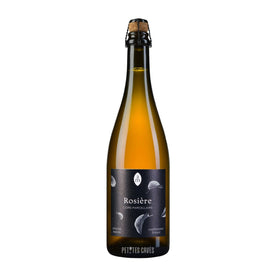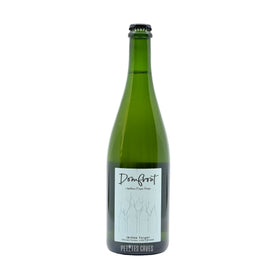Maison HÉROUT
Cider growers: Jean-Baptiste Aulombard (manager of the company), Simon Dufour and Maxime Delauney (3 childhood friends).
Region: Normandy (Cotentin)
Town: Auvers department of Manche (50)
Varieties: More than 25 varieties of apples
- 80% of the orchard "Petit amer", "Taureau", "Cartigny", "Rouge de Cantepie" or (Binet Rouge) local varieties, specific to the Cotentin. They are mostly bitter, bitter-sweet and very rich in phenolic compounds
- 20% of the orchard "Doux Moine", "Marie-Ménard" (bitter and bitter-sweet), "Clos Renaux" (sweet) and "Petit Jaune" (sour).
Surface Winery: 10 ha consisting of high-stemmed (30%) and low-stemmed (70%) apple trees.
Certification: Organic (AB) since the 1970s


Wines from this Winery are in great demand and currently out of stock. Take the opportunity to discover other wines!
These wines should also please you

We tell you about the Winery
|
Founded in 1946 in Auvers (Normandy), in the heart of the Cotentin region, Maison Hérout is a forerunner in organic cider production, with a 100% organic orchard since the 1970s and a strong desire to preserve traditional know-how. Marie-Agnès Hérout has succeeded two generations of cider, calvados and pommeau producers. At first she continued her professional activity, then exclusively, from 2010. With one idea in mind: to obtain an AOC for Cotentin cider, as exists for pommeau and Calvados from Normandy "a very long road that led, in September 2016, to the decree recognising the Appellation d'Origine Contrôlée Cotentin cider " (INAO). In 2018, Marie-Agnès Hérout, who has been at the head of maison for 22 years, was looking to ensure the continuity of this family business, a flagship of Cotentin cider. Three childhood friends from Carentan (4 kilometres from the cider orchards), who have always loved their region and Hérout products, decided to continue the adventure and the history of Maison : Jean-Baptiste Aulombard (now the manager of the company), Simon Dufour and Maxime Delauney. Maison Hérout has an orchard of 10 hectares, made up of high-stemmed (30%) and low-stemmed (70%) apple trees. The average age of the apple trees varies according to the plots, from 10 years to 65 years for the oldest. A replanting phase has been underway for 4 years to renew part of the plots. More than 25 varieties of apples are represented in the orchard, including the Rouge de Cantepie, originally endemic to the Maison Hérout orchard and which is now one of the varieties authorised in the Cotentin protected designation of origin (PDO). More than 80% of the orchard is made up of local apple varieties specific to the Cotentin: "Petit amer", "Taureau", "Cartigny" and "Rouge de Cantepie" or "Binet Rouge". They are mostly bitter, bitter-sweet and very rich in phenolic compounds. The so-called "accessory" varieties make up about 20% of the orchard, mainly : Doux Moine, Marie-Ménard, (bitter and bittersweet); Clos Renaux (sweet) and Petit Jaune (sour). These varieties are known as 2nd and 3rd season varieties: their collection, by variety, starts in October and can last until December. The orchards' soil maintenance method is full grassing. The maintenance of a permanent grass cover in the orchard creates a competition favourable to the synthesis of compounds, interesting for the elaboration of ciders. In order to encourage pollination of the apple blossoms at Winery, the orchard has beehives where the bees produce an "all flowers" honey, a mixture of meadow flowers and apple blossoms. |
THE LAND
It is the constant respect of traditional methods, imposing the use of indigenous yeasts for the first fermentation and excluding any recourse to carbonation, pasteurisation or any addition of water or colouring agents, which guarantees the quality and the style with the "bitter" freshness of the Cotentin ciders of Maison Hérout. Discover them quickly! |
|
The Cotentin PDO ciders from Maison Hérout are effervescent, unpasteurised and non-carbonated, made from pure cider apple juice. They are distinguished by their colour, which is between golden yellow and orange yellow, and their fine effervescence. When tasted, they reveal a balance where bitter flavours predominate. On the nose, they offer subtle aromas where notes of butter and dried herbs are frequently found. On the palate, their discreet acidity ensures a good balance and allows a very fresh bitterness to express itself. |
|
 |
 |









